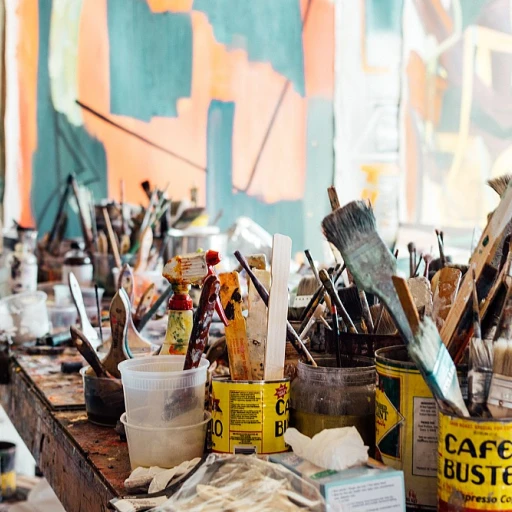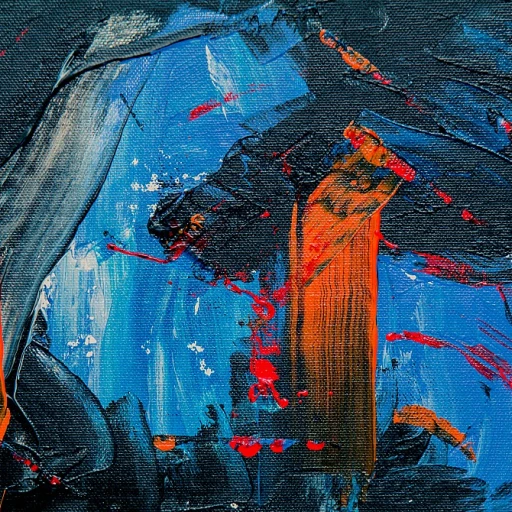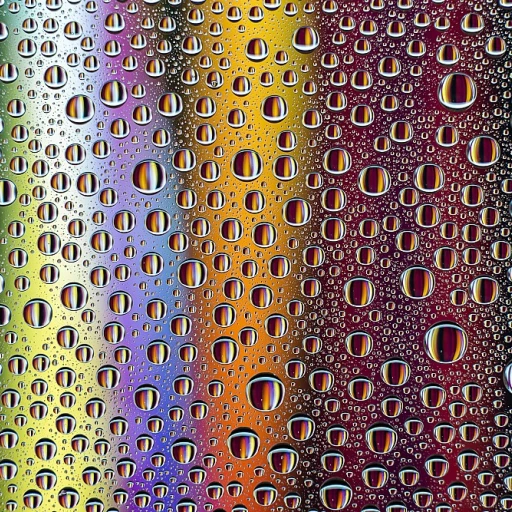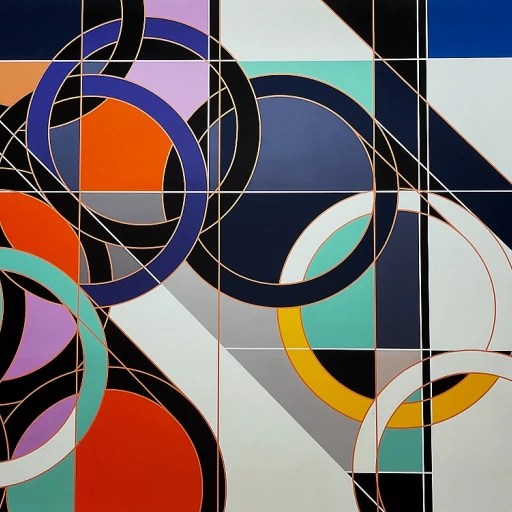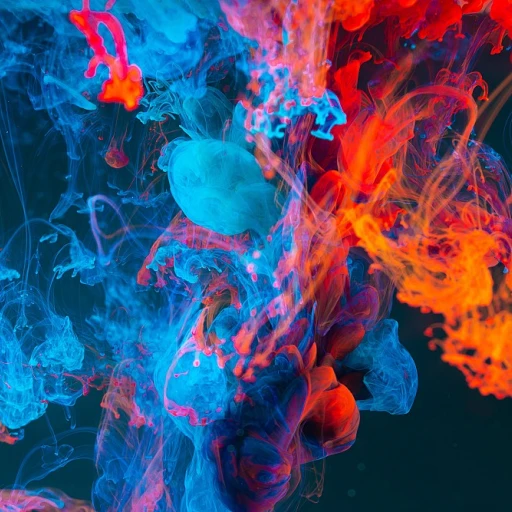-teaser.webp)
The Emergence of NFTs in the Luxury Art World
Unveiling a New Era: Non-Fungible Tokens Enter the Artistic Sphere
The luxury art world is perennially dynamic, adapting to cultural shifts and echoes of new technology. At the heart of this evolution are Non-Fungible Tokens, or NFTs, which are transforming the landscape of art collection and curation. Based on blockchain technology, NFTs have created waves in the market, coupling the allure of the luxury art scene with the precision and security of digital assets. According to recent statistics, the NFT market witnessed a staggering growth, with sales volume surging to $2.5 billion in the first half of 2021 alone, a clear indicator of the burgeoning interest in digital art forms.
Digital Genesis: The Rise of a New Collectible Asset
For luxury artwork owners, the implication of such digital assets is an expansive terrain of exclusive ownership and collection. As these tokens are indivisible and distinct from one another, NFTs have emerged as the new hallmark of provenance for digital works. They represent a seismic shift not only in how artists disseminate their work but also in how collectors cultivate their holdings. The intersection of art and technology has led to an unprecedented genre of collectibles, and their ownership is synonymous with status, as well as patronage in the digital realm. It is a clear example of the exclusivity principle at play; a single NFT can signify undisputed ownership of a unique piece, just as a traditional work would.
The Intersection of Art and Technology: Securing Rarity in the Digital Age
NFTs offer a digital ledger for artwork, providing a transparent, immutable history of ownership which is extremely attractive for collectors in the luxury market. This technology democratizes art investment, allowing for fractional ownership and broader accessibility while ensuring the sanctity of the individual piece. As the digital and physical worlds continue to merge, NFTs stand at the forefront, offering a digital certificate of authenticity that is rapidly gaining trustworthiness and recognition. Echoing the sentiments of market leaders, luxury art owners who align with NFT technology enjoy the reassurance of both secured authenticity and the potential for appreciable investment returns.
Authenticity and Exclusivity: NFTs as Certificates of Ownership
Ensuring the Authenticity of High-Value Artworks
The sphere of luxury art is synonymous with authenticity and exclusivity. With the advent of Non-Fungible Tokens (NFTs), the crux of ownership has shifted toward an incontrovertible digital paradigm. Statistics show a burgeoning growth in the NFT market, with a reported sales volume of approximately $24.9 billion in 2021, according to a report by DappRadar. This growth underscores NFTs' role in certifying the uniqueness of luxury artworks.
NFTs: A New Epoch for Collectors’ Certificates of Authenticity
Blockchain technology has redefined the provenance of artworks. As every transaction is etched in the blockchain's immutable ledger, NFTs serve as the ultimate certificate of authenticity for art collectors. This digital proof not only verifies the originality of a piece but also ensures an exclusive ownership experience. Christie's sale of Beeple's Everydays: The First 5000 Days for $69 million is a prime example of NFTs as a stamp of uniqueness and as a secure authentication tool.
The Exclusivity Quotient: Unlocking Unique Ownership Experiences with NFTs
Ownership of luxury artwork goes beyond mere possession—it's an emotional investment reflecting a collector's identity. NFT-based art elevates this notion by offering personalized experiences. For instance, owners can receive exclusive access to artists or previews to new collections. A survey by Art Basel and UBS reported that 81% of high-net-worth collectors purchased art for collecting purposes rather than investment, highlighting the value placed on the exclusivity and personal connection that NFTs can enhance.
Combatting Forgeries in the Art Market Through NFTs
The luxury art market has been plagued by forgeries, with fine art forgery cases resulting in millions of dollars in losses annually. NFTs combat this by providing a tamper-proof digital trail. Each NFT is linked to one artwork and cannot be replicated or forged, thereby preserving the integrity of the market. The implementation of NFTs for artists like Damien Hirst transforms not only the method of transaction but also solidifies a progressive outlook on art collection.
Investment Analysis: The Financial Upside of NFT-Based Luxury Art
Deciphering the Investment Potential of NFT Artwork
The allure of non-fungible tokens (NFTs) extends far beyond the innovative artistry they encapsulate; their investment potential is increasingly captivating art enthusiasts and investors alike. According to a report by NonFungible.com, the NFT market tripled in size in 2020, reaching over $250 million in market value. For luxury art owners, NFTs open the treasure trove of digital assets, providing a new horizon for diversifying portfolios. As digital tokens offer evidence of authenticity and ownership, they inherently enhance the artwork's value, consequently elevating its potential return on investment.
Maximizing Returns in the NFT Marketplace
- Upward Market Trends: Recent statistics showcase a booming NFT market, with savvy investors reaping sizeable profits through strategic sales and trades.
- Exclusive Auctions: Platforms such as SuperRare and Nifty Gateway have become hubs for exclusive digital art sales, some fetching millions of dollars, shedding light on the considerable financial rewards associated with NFT investments.
- High-Profile Collaborations: Renowned artists and luxury brands are increasingly entering the NFT space, indicating a solid vote of confidence in the profitability of such assets.
Understanding Market Volatility and NFT Valuation
While the prospect of lucrative returns is apparent, luxury art owners should be cognizant of the NFT market's volatility. Valuing NFTs can be particularly challenging due to their nascent nature and the rapid pace at which the digital art landscape evolves. A keen analytical approach to market trends, combined with the historical significance of the artwork, will guide owners in discerning the long-term viability and worth of their NFTs. Artistic merit, the creator's reputation, and the piece's rarity are critical factors contributing to an NFT's appraisal. As reported by Art Market Research, the value of art-backed NFTs has seen a dramatic increase, signaling a burgeoning trajectory for investors who are able to adeptly navigate the market.
Debating Digital Permanence: The Future of NFTs in Art Conservation
Unpacking the Longevity of NFT Artworks
The notion of digital permanence is at the heart of NFTs' transformative potential. Unlike traditional canvases that age, NFTs exist on the immutable ledger of the blockchain. According to a report by Art Market Monitor, blockchain technology can preserve an artwork's history and authenticity indefinitely. This innovation significantly impacts the luxury art market, where provenance is paramount.
However, while NFTs offer a breakthrough in art conservation, the digital artform itself may still face challenges. The durability of the digital file, reliant on evolving technologies and formats, could dictate the lifespan of an NFT. Yet, art collectors seem optimistic, as with blockchain, the artwork's legacy might outlive the medium itself. Forbes states that 10% of art collectors are now buying digital and NFT art, signaling a trend towards faith in their long-term value.
Examining Technological Obsolescence and NFT Viability
The art of the future must consider the fate of its presentation technology. The NFT revolution brings forth questions about format obsolescence and the necessary hardware or software to experience digital art. The luxury art market demands forward-thinking strategies to ensure that today’s NFT purchases remain accessible tomorrow. A survey by ArtTactic highlights that nearly 25% of art collectors consider technological obsolescence as a primary concern when investing in NFTs.
Addressing these concerns involves creating standards and protocols for digital art preservation. Leaders in the luxury artwork field are collaborating with tech innovators to future-proof NFTs against technological shifts, ensuring that your investment remains sound over time. Digital artists, like Beeple, who sold an NFT for a staggering $69 million, also emphasize the role of the creators in maintaining the artwork's compatibility with future platforms.
The Role of Community in Sustaining NFT Legacies
Community engagement has emerged as a significant pillar in preserving the value of NFT-based luxury art. Artworks are no longer static pieces; they evolve and gain value through interaction and shared experiences. As reported by NonFungible.com, a leading NFT market analyst, engaged communities can drive the value of NFTs, with some collections seeing increases in value by over 50% due to active community support.
Art patrons now play a role in art conservation by participating in the digital communities surrounding their pieces. This dynamic adds a layer of value to the NFT that transcends its digital format, bolstering its stance as a sound investment and a luxury item.
- Blockchain technology can indefinitely preserve an artwork's provenance.
- The durability of the digital file is a factor to consider for NFT's longevity.
- Creating digital art standards is crucial for future-proofing NFT investments.
- Engaged communities significantly enhance the value and lifeline of NFT artworks.




